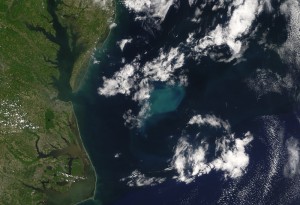
There’s a nice article in the New York Times on the fact that oil, petroleum, did not come form dead dinosaurs, but rather from the microscopic plankton that died and fell to the ocean floor.
The idea that oil came from the terrible lizards that children love to learn about endured for many decades. The Sinclair Oil Company featured a dinosaur in its logo and in its advertisements, and outfitted its gas stations with giant replicas that bore long necks and tails. The publicity gave the term “fossil fuels” new resonance. – Broad, 2010
It’s easy to forget how pervasive is the idea that oil comes from dinosaurs. Broad’s article is a nice reminder that:
Today, a principal tenet of geology is that a vast majority of the world’s oil arose not from lumbering beasts on land but tiny organisms at sea. It holds that blizzards of microscopic life fell into the sunless depths over the ages, producing thick sediments that the planet’s inner heat eventually cooked into oil. It is estimated that 95 percent or more of global oil traces its genesis to the sea. – Broad, 2010
How do we know?
[I]n the 1930s. Alfred E. Treibs, a German chemist, discovered that oil harbored the fossil remains of chlorophyll, the compound in plants that helps convert sunlight into chemical energy. The source appeared to be the tiny plants of ancient seas. – Broad, 2010

We tend to find a lot of oil in the deltas of the great rivers because the rivers provide nutrients for the microorganisms to survive and layers of sand and clay sediments that trap the oil and natural when they’re produced.
The article also ties the location of oil production to the geography of plate tectonics.
[W]hen Africa and South America slowly pulled apart in the Cretaceous period, forming the narrow beginnings of the South Atlantic. Big rivers poured in nutrients. A biological frenzy on the western shores of the narrow ocean ended up forming the vast oil fields now being discovered and developed off Brazil in deep water. – Broad, 2010